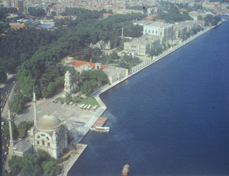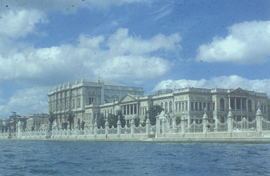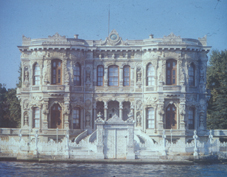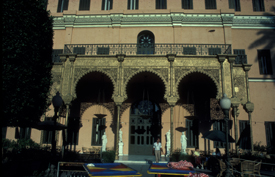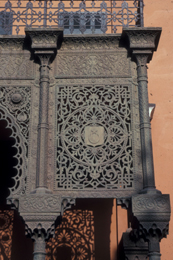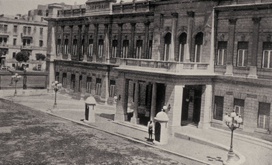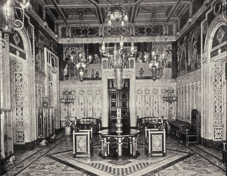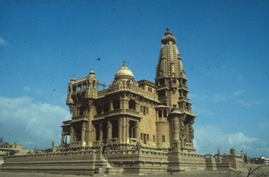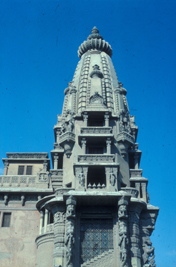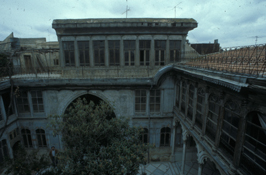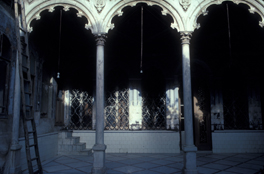AGA KHAN PROGRAM FOR ISLAMIC ARCHITECTURE
Course 4.611/4.613:
18-Eclecticism in 19th century Architecture: (Click on images to enlarge)
Historical Background:
The nineteenth century started with the first European military interventions in the East and ended with most of it under direct colonial rule. Architecture, like all other institutionalized disciplines, was affected by these new political realities. Not only were European styles and types invading the cities and regions of the East and shaping their outlook and the tastes of their inhabitants, but also the architectural heritage of the “Orient” was being documented, analyzed, and interpreted by Western and European-trained architects. Consequently, hybrid styles of building and decoration were produced that borrowed from the varied repertoires of Islamic architectures, and blended them with various European structural, functional, and stylistic modes.
The Examples:
The Dolmabahce Palace, Istanbul (1853): Built in the most pompous of styles for the sultan Abdülmecit by the most famous of the Balyan family of architects, Karabet. It is a combination of all European modes and decorations, with not a single reference to the Ottoman palatial vocabulary. In it, a deliberate decision to espouse the "modern" European manners can be seen as a political as well as a stylistic statement.
Dolmabache Palace, aerial view |
Dolmabache Palace, Waterfront facade |
The Küçüksu Summer Palace, Istanbul (1856-57): Built by another Balyan, Nikogos, for sultan Abdülmecit, in the place of a yali. Its heavily ornate rococo façade looks like it was carved of a single piece of marble. Its European garlands, columns, and urns notwithstanding, the façade still retains a Seljuk spirit in the arrangement of these elements.
Kucuksu Palace, facade |
The Gezirah Palace, Zamalek Island, Cairo (1864): Built by the Khedive Isma‘il Pasha and designed by the Austrian architect Franz Bey. The most impressive details of the palace are the cast-iron slender porticoes designed by the German architect Karl von Diebitsh and made in Germany and reassembled on site.
Gezirah Palace, main portico |
Gezirah Palace, detail of a portico |
The Palace of ‘Abdin, Cairo (1863-74): Originally built by the Khedive Isma‘il as the new dynastic center. The palace was renovated several times and its actual façade is totally neo-classical in style. Ceremonial halls in it are fascinating exercises in eclectic, bombastic styles. The most impressive among them are the Byzantine Hall and the Mamluk Hall.
The Palace of 'Abdin, exterior facade |
The Palace of 'Abdin, the Byzantine Hall |
The Palace of Baron Empain, Heliopolis, Cairo (completed 1905): Built by the French architect Alexandre Marcel as an eclectic Hindu palace in an Islamic capital. The palace was initially the residence of this industrialist Belgian Baron in the new garden-city he planned in this suburb of Cairo for a new, select working class.
Palace of Baron Edward Empain, general view |
Palace of Baron Edward Empain, detail of the entrance domed tower |
The Moujaled House, Damascus (completed 1905): A typical courtyard house with all the traditional elements, but one whose surface articulation is heavily baroque. The ornamented portico in front of its qa‘a is said to have been built by Florentine marble carvers.
The Moujaled house, general view of the main courtyard |
The Moujaled house, the marble portico infront of the main qa'a |
